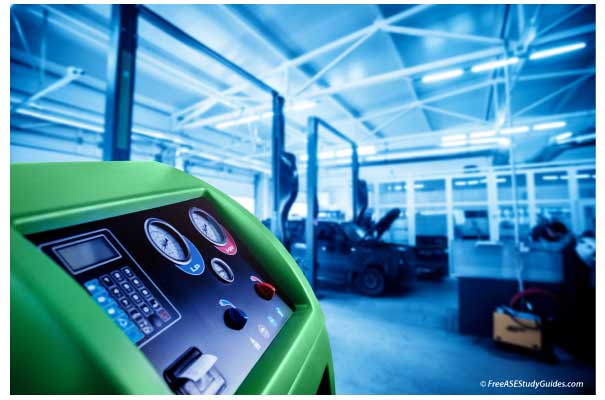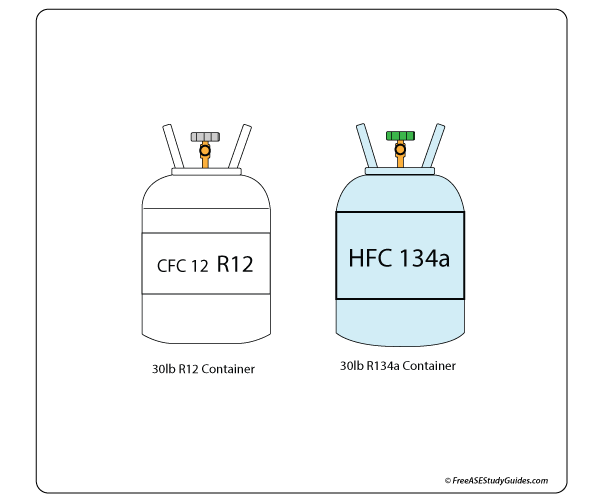R134a Refrigerant Cylinders

R134a refrigerant replaced R12 in the early 1990s. R12 or CFC-12 was damaging and depleting the ozone layer. The release of this environmentally damaging gas was outlawed, and regulation of the replacement HFC 134a went into effect. It has a different chemical composition. The chlorine in CFC is replaced with hydrogen in HFC.

Never place one of these tanks in direct sunlight. Heat expands the liquid refrigerant past its acceptable capacity. Refrigerant is dangerous and, in the liquid state, will freeze on contact with the eyes or skin. Wear eye protection, work in a well-ventilated area, and avoid breathing the vapors.
They're designed to accept a certain amount of refrigerant at a certain temperature. Most will not exceed 130° F, or the cylinder may burst. A pressure relief valve is used with many service cylinders to protect against high pressures and tank bursts. Service cylinders take more abuse than most, and much care should be taken when handling them.

Never mix refrigerants. Use only DOT-approved cylinders, and never intentionally release refrigerant into the atmosphere. When storing refrigerants, do not exceed 60% of the cylinder's refill capacity. As one can imagine, a full storage tank can explode with great velocity.